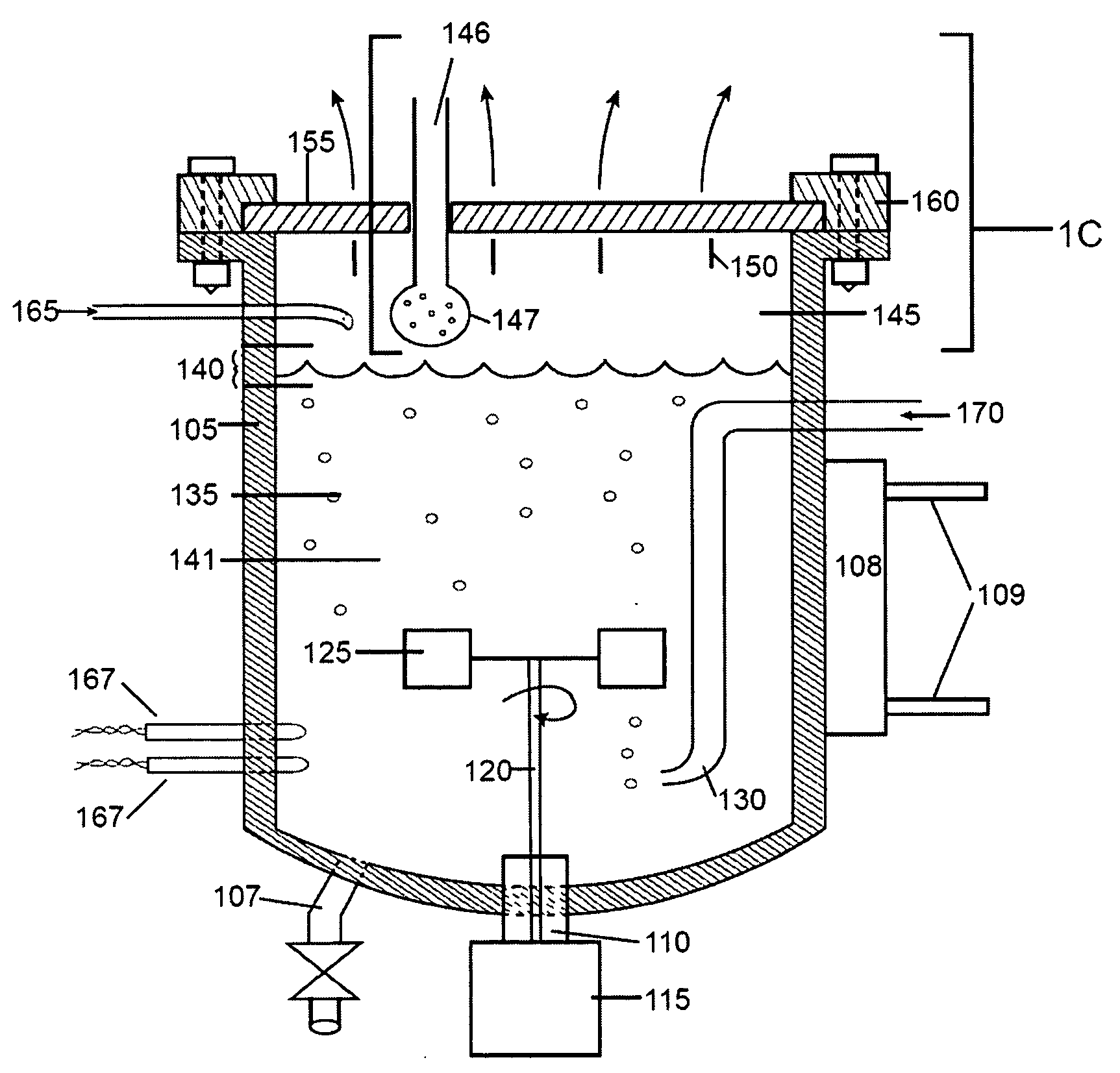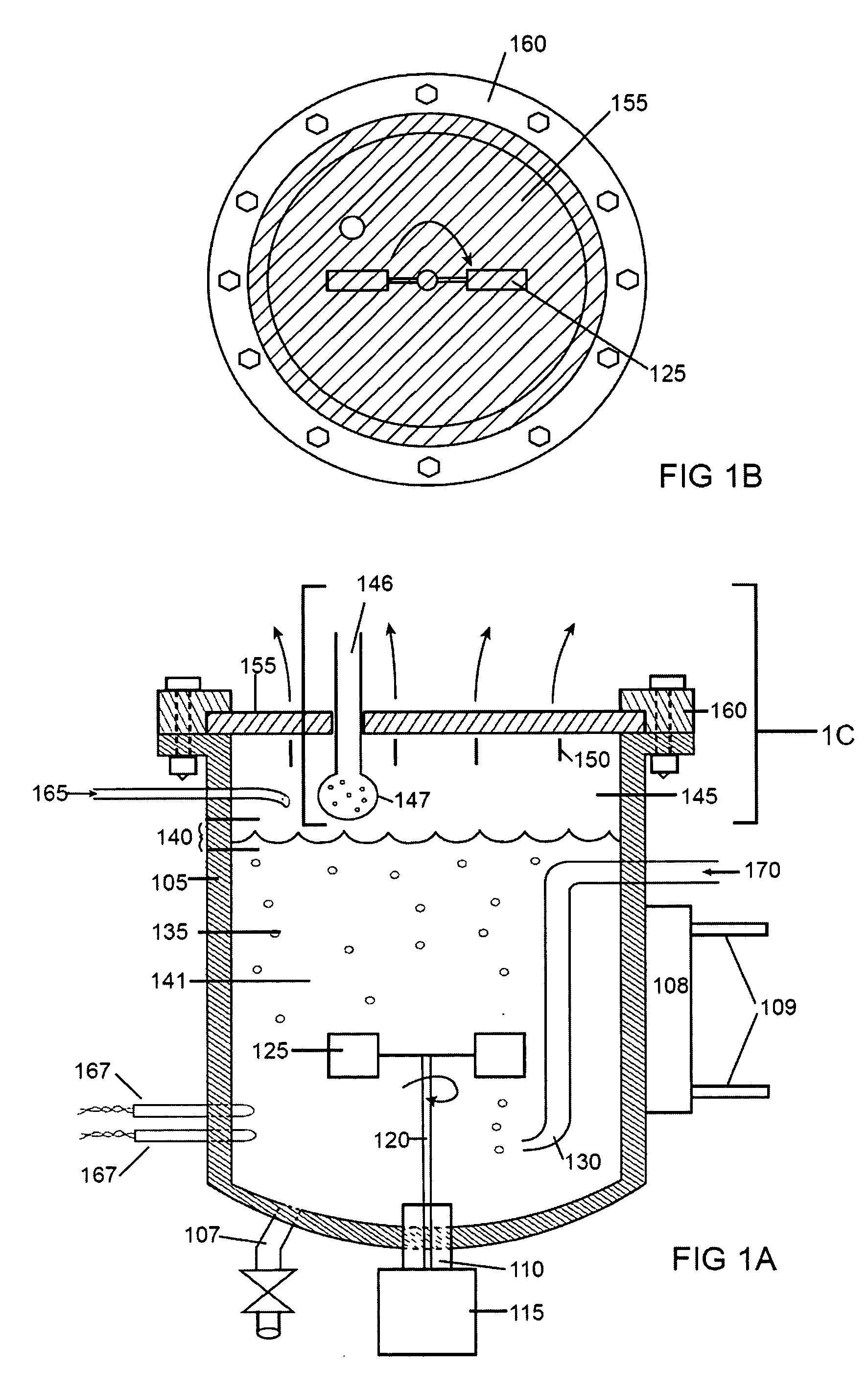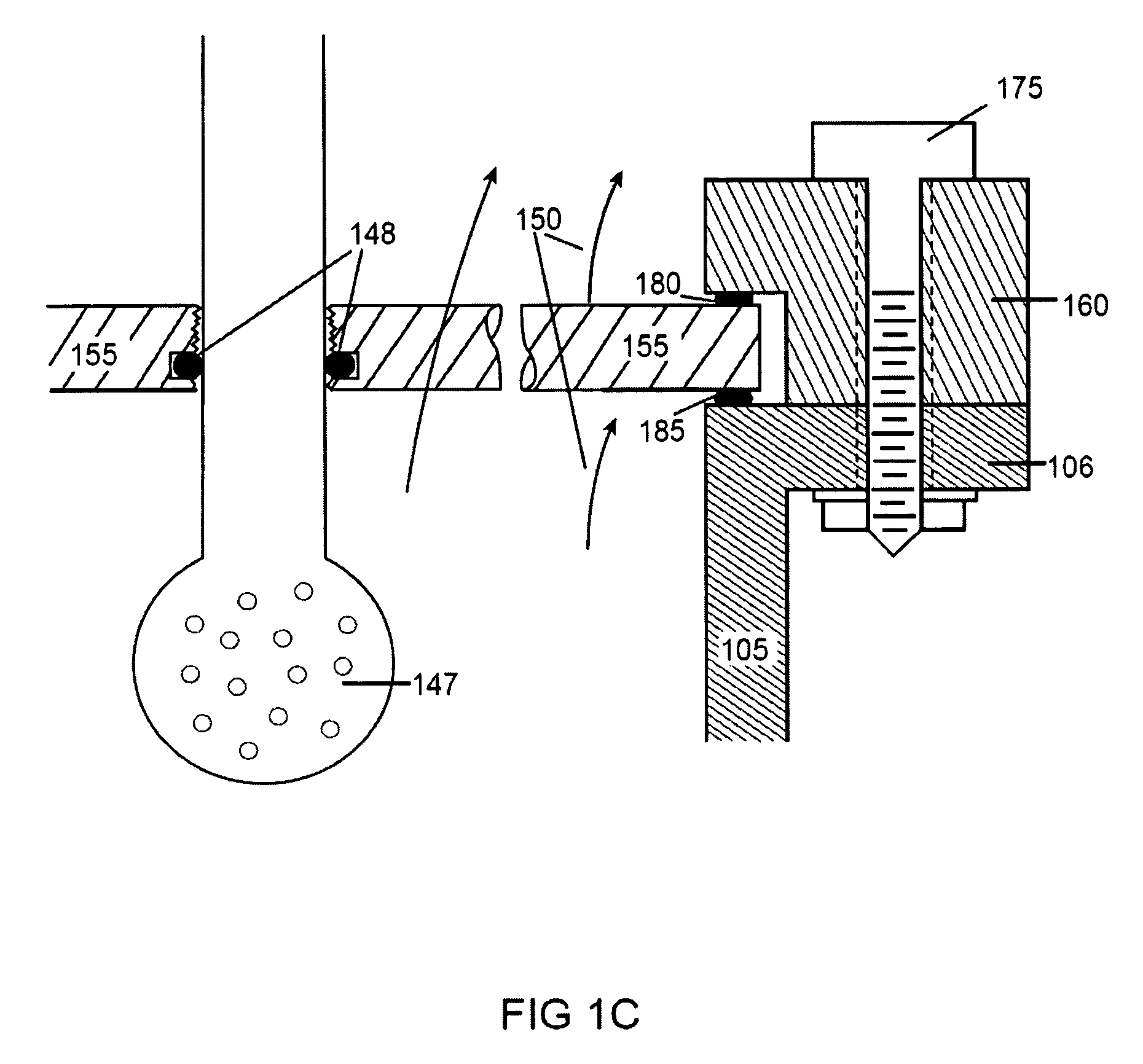Novel bioreactor
a bioreactor and bioreactor technology, applied in the field of bioreactors, can solve the problems of inability to manufacture sol-gel processes, sag and crack, and ceramic membrane tubes are very brittle, and achieve the effect of preventing contamination
- Summary
- Abstract
- Description
- Claims
- Application Information
AI Technical Summary
Benefits of technology
Problems solved by technology
Method used
Image
Examples
example 1
[0162]A Class I bioreactor is designed and assembled that is similar to the bioreactor illustrated in FIGS. 1A-1C with a dome, lid or cover made of porous material prepared by a sol-gel process. The porous material is in a flat configuration. Gasket materials are employed to seal the porous material. This bioreactor is utilized for aseptic fermentation for the production of a pharmaceutical. The bioreactor illustrated in FIGS. 1A-1C is also useful for batch production of primary and secondary metabolites or engineered proteins using submerged culture fermentation. The porous material employed in this exemplary bioreactor simultaneously allows migration of gases out of the reactor and prevents accidental influx of contaminating organisms or outflow of production microorganisms. The use of the porous material improves and extends the bioreactor by eliminating the need for a separate gas vent that also needs to be configured as a sterile barrier.
[0163]The bioreactor is cleaned and sani...
example 2
[0174]A Class I bioreactor is designed and assembled that is similar to the bioreactor illustrated in FIGS. 2A-2D with a porous material dome 230 and a porous material filter 262 in the exhaust gas vent 260. The porous material dome 230 is a hemi-spherical / cylindrical shape and the porous material filter 262 is a monolith. Adhesives 285 are used to mount the porous material dome 230 to the vessel wall 205 near the incoming gas duct 275. This bioreactor is utilized for aseptic fermentation for the production of an amino acid. The use of porous material in the bioreactor of this example simultaneously allows sparging of gases into the reactor and prevention of accidental influx of microorganisms that might be present in the gas stream. The use of the porous material improves and extends the bioreactor by combining a sparge device with a hydrophobic sterile barrier. The gas inlet line no longer needs a separate sterilizing filter to exclude contaminating microorganisms. The porous mate...
example 3
[0176]A Class II bioreactor is designed and assembled that is similar to the bioreactor illustrated in FIGS. 3A-3B with a porous material cover 360 allowing passage of evolved gas. The porous material is in a flat configuration. This bioreactor is utilized for anaerobic production of hydrogen from starchy algae in the absence of light. The use of porous materials in the exemplary bioreactor of this example improves and extends the bioreactor by providing a single component that simultaneously allows unhindered two-way gas exchange between ambient atmosphere and the culture fluid and excludes foreign microorganisms from the bioreactor.
[0177]The bioreactor is cleaned, sterilized and filled with a growth medium as generally described in Example 1 taking into account variations in method required by the different vessel size, shape and geometry and the different process implemented in the bioreactor as would be anticipated by those skilled in the bioreactor art.
[0178]An inert gas, e.g.,...
PUM
 Login to View More
Login to View More Abstract
Description
Claims
Application Information
 Login to View More
Login to View More - R&D
- Intellectual Property
- Life Sciences
- Materials
- Tech Scout
- Unparalleled Data Quality
- Higher Quality Content
- 60% Fewer Hallucinations
Browse by: Latest US Patents, China's latest patents, Technical Efficacy Thesaurus, Application Domain, Technology Topic, Popular Technical Reports.
© 2025 PatSnap. All rights reserved.Legal|Privacy policy|Modern Slavery Act Transparency Statement|Sitemap|About US| Contact US: help@patsnap.com



